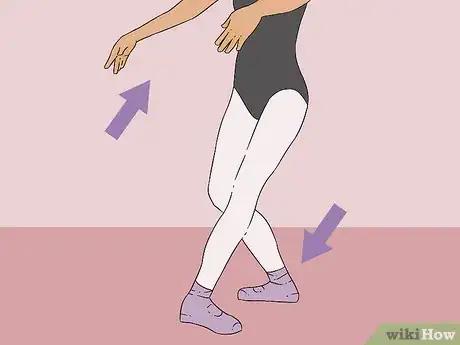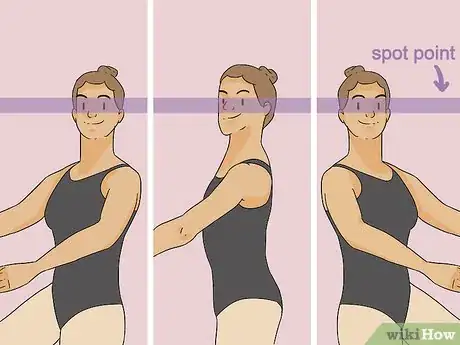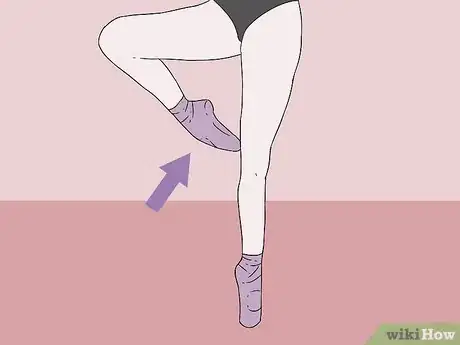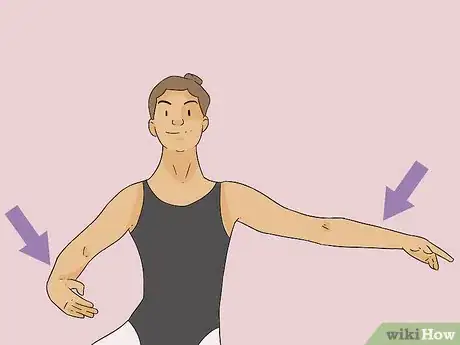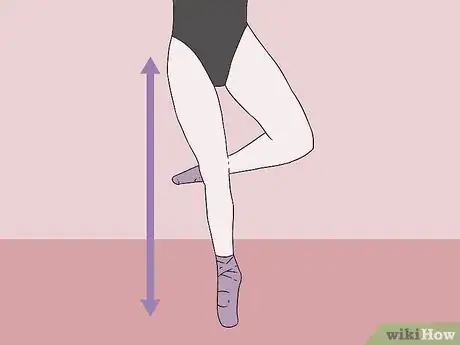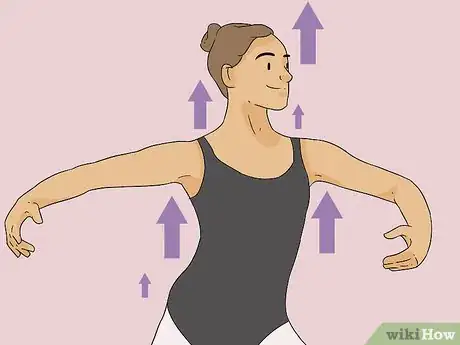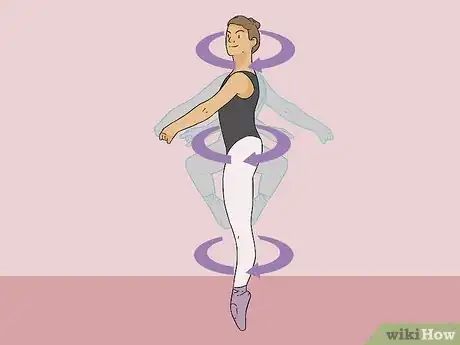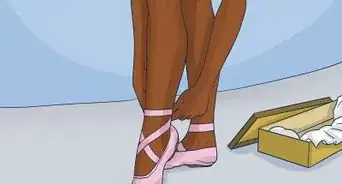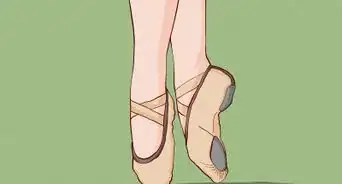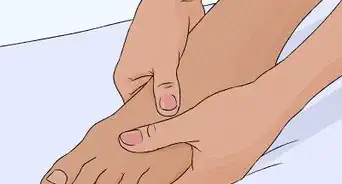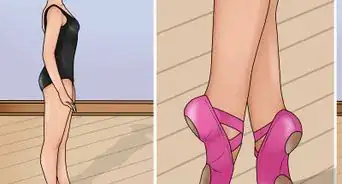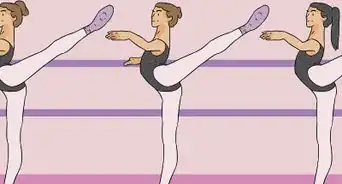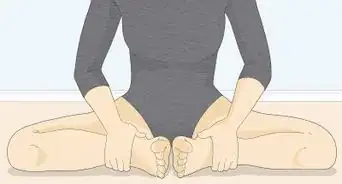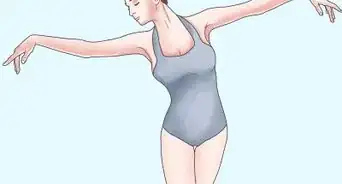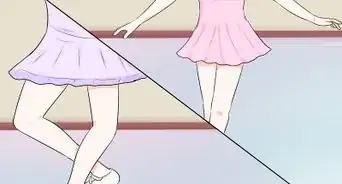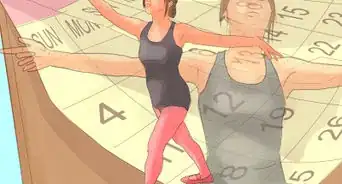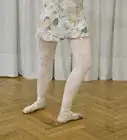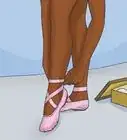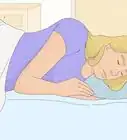This article was co-authored by Murisa Harba. Murisa Harba is an Acting Coach, Dance Instructor, and the Artistic Director & Owner of About the Works Actors Studio and Take My Lead LA. With over 13 years of experience, she specializes in private ballroom dancing lessons and encouraging actors to creatively tell stories. Murisa holds a BFA in Theatre and a Minor in Dance from Boston University’s College of Fine Arts.
This article has been viewed 150,864 times.
Completing a double-turn, also known as a double pirouette, is one of the most iconic maneuvers in dancing ballet. Completing two revolutions successfully, without getting dizzy or falling is a matter of getting the right positioning, putting the right momentum into your push-off step, and spotting properly.
Steps
Getting Started
-
1Warm up. Before attempting any double-spins or pirouettes of any kind, it's important to get loosened up to avoid injury.[1] Warm up your neck, shoulders, arms, back, sides, and legs before dancing with a long stretching routine.
- A nimble, loose neck will aid your equilibrium and balance when spotting and spinning. A loose torso will help you stay grounded and centered. Warmed up legs will provide the necessary support you need and reduce the possibility of cramping. The most important three body parts for a good turn are your neck, shoulders, and legs.
-
2Choose which foot you will be spinning on. This side of your body will be referred to as your "spin" foot, and the corresponding leg, arm, and side will also be referred to as the "spin" side. The other side of your body will be referred to as your "lift" side.Advertisement
-
3Place your feet and hands properly. Begin standing with your spin foot in front of your lift foot, in a wide, balanced position, with most of your weight on your spin foot.
- Place your spin arm at chest-height in front of you, with relaxed, bent elbow, so your spin forearm is parallel with your stomach.
- Your lift arm should be extended directly out from your side, in line with your torso, not too far back or too far forward. The lift arm will provide the majority of your spinning power by swinging it in front of your body.
-
4Find a spot directly in front of you at eye level. This is your spot point. Keep your eyes fixed on this spot throughout the entire motion.[2]
- Practice spotting by stepping slowly in a circular motion in one spot. Keep your eyes on one spot at eye level, on the wall or landscape directly in front of you. Keep your eyes there until your turning motion forces you to spin your head.
- If your head is level, the spotting motion will keep you from becoming overly dizzy or losing balance. Even with proper spotting, a slight dizzy feeling can be expected during a double spin. Minimize this by keeping your neck and shoulders loose, and turning your head in a full circle as quickly as possible. The faster your body spins, the easier it is to spot properly.
Executing a Double-Turn
-
1Push off with your lift leg and bring your toe to your spin knee. Bring your lift knee up straight and point your toe as you push off, bringing it to the notch at the top of the knee on your spinning leg. This should somewhat resemble the 'jackknife' dive position.[3]
-
2Swing your lift arm in front of you. To carry your momentum around, you need to match the position of your spin arm, about chest-height, like you are holding a small beach ball to your stomach.[4]
-
3Straighten your spin leg. Strengthen the upper thigh, ankle, and knee of your spin leg to create a rock solid pole on which to spin. Make a tiptoe shape with your spin foot, keeping your spin toes relaxed and responsive for fine tuning your balance during the spin.
- Your spin point is the ball of your spin foot, which is the thick pad directly behind your toes. Do not spin directly on your toes. This is impossible and incredibly painful, no matter how convincing good ballet dancers look.
-
4Send your weight straight upward. Imagine all your weight forming a straight pole, from the ball of your spin foot up through your spin leg, through the center of your torso and out the top of your head. Just as a toy top has more of its weight at the top, so should your body.
- It's important to think "up" instead of focusing on the spinning motion. Your momentum should work to carry you around, and focusing on staying as straight as possible and maintaining the proper form will help you balance.[5]
-
5Let yourself spin twice. When you are heading on your second turn whip your head around, spotting twice. As you slow, return your lift leg to the ground and relax both arms out to your side at mid chest height to stop completely. Gently bring your feet back to the ground and let your momentum and weight slow you down naturally, coming to the ground.
- The biggest difference between the double spin and the single spin is just the amount of force that you put on the turning step as you push off. It'll take some practice before you're able to do two, but stick with it and practice your spotting, and you'll get the hang of it eventually.
Community Q&A
-
QuestionHow do I stop myself from falling onto my heel?
 Community AnswerKeep your abs tight and your chest up. Make sure your legs are straight as well.
Community AnswerKeep your abs tight and your chest up. Make sure your legs are straight as well. -
QuestionI was only able to do it once on my dominant foot. But now I can do one and a half turns. Am I getting close?
 Community AnswerYes, you are getting very close. Keep practicing and you'll get both. Try keeping your back straight and stiff, and you'll probably get two turns soon.
Community AnswerYes, you are getting very close. Keep practicing and you'll get both. Try keeping your back straight and stiff, and you'll probably get two turns soon. -
QuestionHow do you stop from getting dizzy?
 Community AnswerYou need to do spotting; if you don't spot, you'll most likely get dizzy. So before you spin, pick a wall or something that's right in front of you that you can turn your head back to each time you go around in your spin.
Community AnswerYou need to do spotting; if you don't spot, you'll most likely get dizzy. So before you spin, pick a wall or something that's right in front of you that you can turn your head back to each time you go around in your spin.
Warnings
- This movement requires practice. Just like one learns to juggle two balls before juggling three, practice a single pirouette many times over. Then, once you have that, simply apply more upward thrust and power to get in that second spin. Spot twice.⧼thumbs_response⧽
Things You'll Need
- shoes with a slick bottom and flexible casing. Dance shoes highly recommended.
- light clothing you can easily move in
- a slick, even floor. In order of best to worst surfaces to spin on: hardwood floor, linoleum, cement, carpeted, tiled. The last two are downright nasty to spin on. However, carpet is good to start out with at the very beginning with socks. It's a slower turn and if you fall, not as painful.
References
- ↑ https://www.nhs.uk/live-well/exercise/how-to-warm-up-before-exercising/
- ↑ https://www.energetiksblog.com.au/blog/2017/6/7/dance-advice-the-art-of-pirouettes
- ↑ https://www.energetiksblog.com.au/blog/2017/6/7/dance-advice-the-art-of-pirouettes
- ↑ https://www.rockettes.com/blog/ways-to-improve-your-pirouette/
- ↑ https://www.rockettes.com/blog/ways-to-improve-your-pirouette/
- ↑ https://www.rockettes.com/blog/ways-to-improve-your-pirouette/
- Videos provided by Live On Pointe


